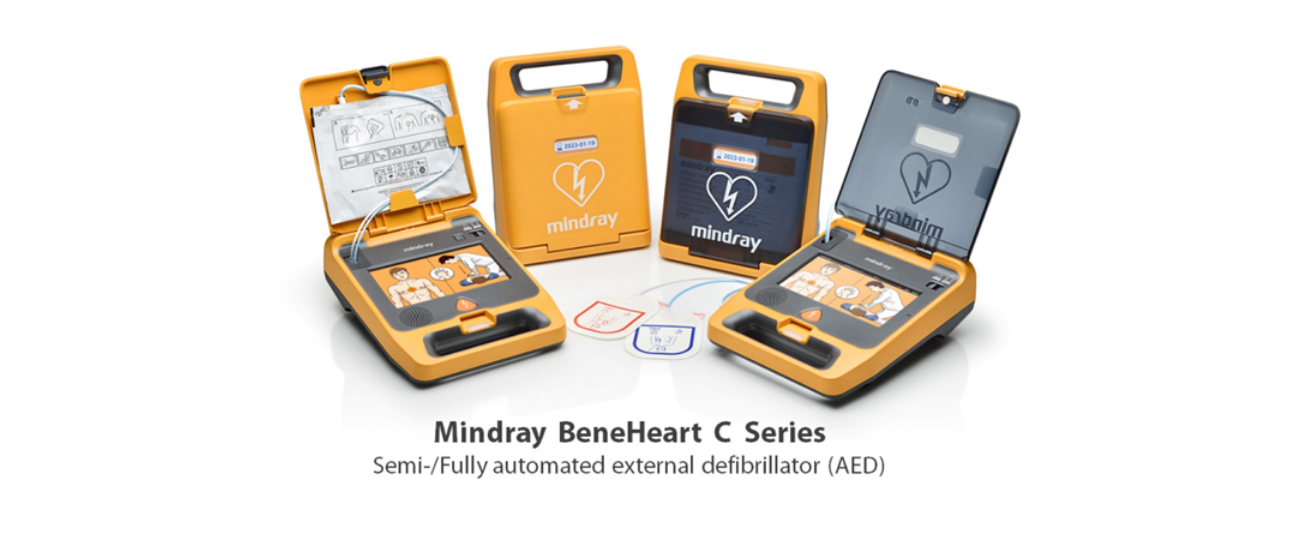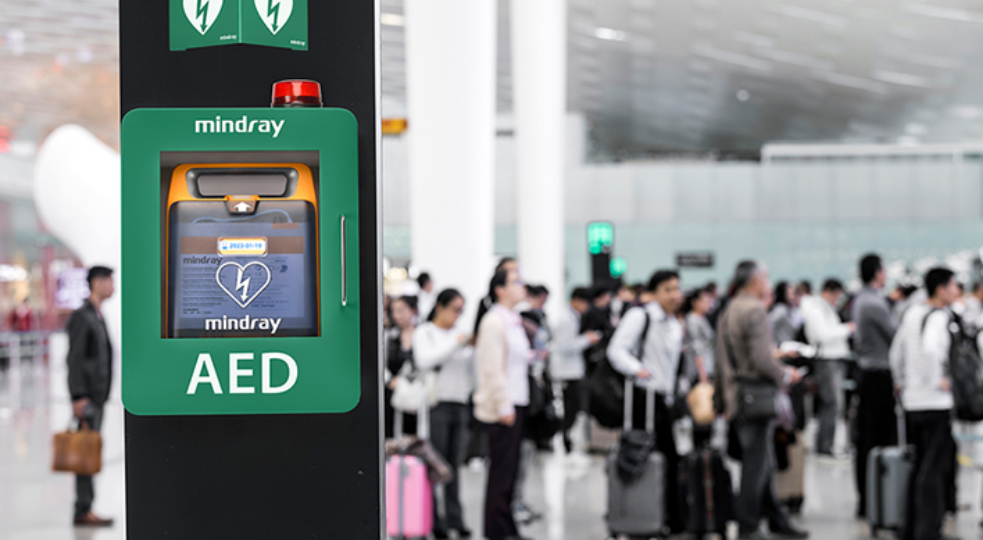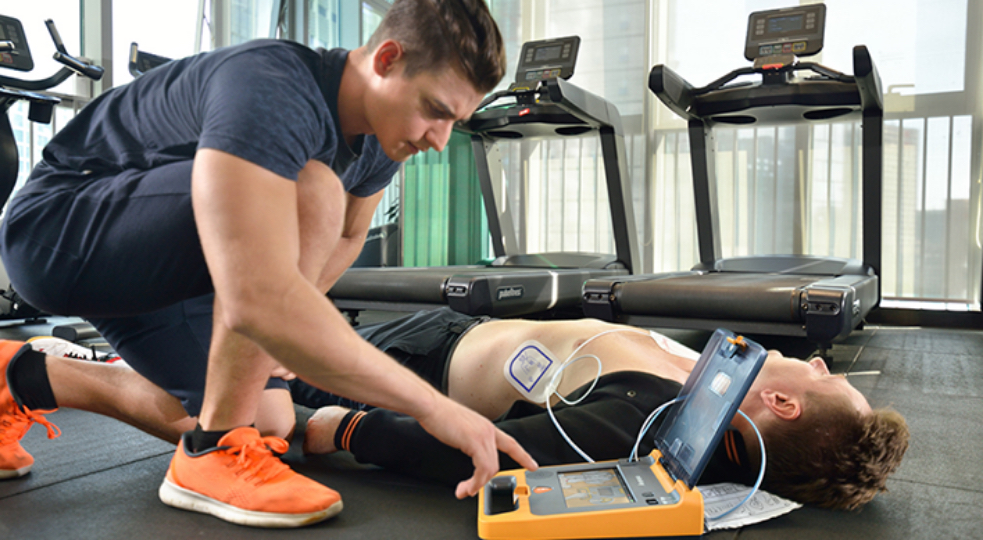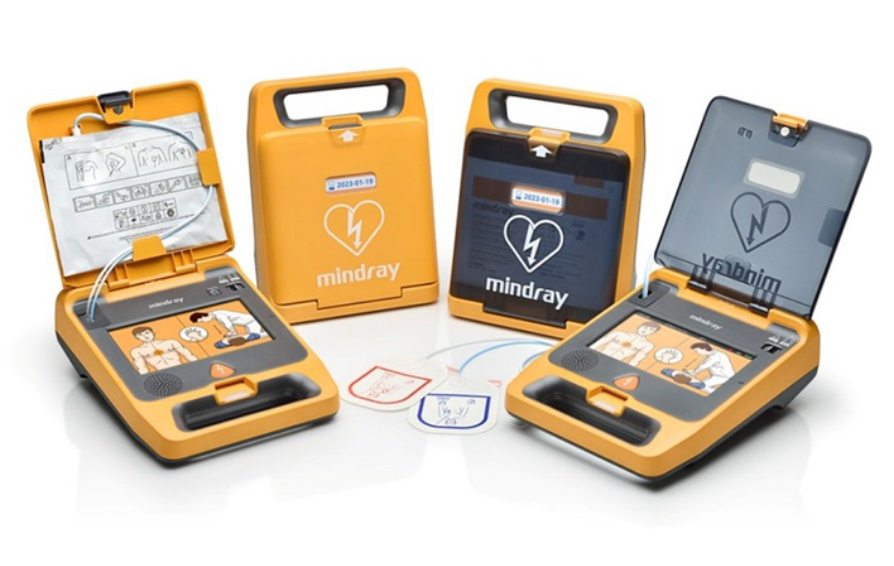Sudden Cardiac Arrest (SCA) has turned out to form one of the leading causes of death globally. It affects 350,000-700,000 people in Europe and over 356,000 people outside hospitals in the US every year [1].
Automated external defibrillators (AEDs) and cardiopulmonary resuscitation (CPR) are two very effective means of tackling out-of-hospital SCA. The Hallstrom trial has shown that the survival rate of patients doubled in communities equipped and trained with both [2].

What are AED programs?
In emergency cases of SCA, nothing is more important than a rescuer standing by with an AED in readiness to administer an electrical shock to the patient’s heart to get it back to its normal rhythm. In fact, for each minute wasted without administering proper CPR and defibrillation, the person’s chances of survival reduces to about 10%.
It is, however, unfortunate that still a large percentage of the global population is not well informed about sensitive issues like this. Some developed countries have already started implementing AED and CPR programs to address SCA in public spaces and reduce mortality rate resulting from it.

The AED and CPR programs seek effective ways to equip the public facilities with life-saving devices and educate the public on resuscitation knowledge and skills. These programs teach ordinary people how to prevent loss of lives that could have been saved just by ‘clearing and administering shock’ in our schools, communities, workplaces, nation, and the global world at large.
If you’re a facility manager planning to initiate an AED and CPR program in your organization, or a volunteer interested in being part of these programs for your local community, here’s what you need to know:
How do you implement a successful AED program?
Any AED program should be one that is aimed at broadening public access to early defibrillation.
● Study the community, find out the need
You should know that saving lives requires team efforts. You will have to first determine the needs of the community or area the program wishes to cover, which would affect the success of the program [3].
● Assign a competent program coordinator
For every program to be successful, it needs a competent program coordinator to plan and manage the day-to-day program implementations. It is the duty of the program coordinator to communicate with key program stakeholders, on-site responders, residents of the community where the program will take place, as well as the general public on anything pertaining to the program. The stakeholders can be external or internal, such as building or property managers, tenants, board members, union leaders, etc., and can include departments, such as risk management, environmental health and safety, legal, human resources, and corporate security.
● Check the government laws or local requirements
No matter how wonderfully well you have drawn your plans for AED program management implementation, you have to work by the state or local government laws and requirements. For instance, some states specify the type of training that is required while some would have specific requirements for maintaining and renewing an AED program [4].
● Training of on-site responders
Perhaps an AED program may be said to be incomplete without quality trainings. It would save more cost to train employees who are always on duty on the site, such as the security personnel or the safety response team of an organization.

Case studies: how to promote the AED program in the global world?
To promote AED programs, AEDs should first be made available and easily accessible in both private and public places with a dense population. Some countries are already taking steps to mandate the installation of AEDs in government and public buildings.
Since it is critical to have rescuers at the scene of the cardiac arrest, there is a need to have willing volunteers or laypersons trained for such emergency cases. As a way of improving resuscitation outcomes statewide, nationwide, and worldwide, training of laypersons should be put in place. Without the availability of the trained volunteers, all investments made into public AED may become waste as the AED programs may turn out to be ‘white elephant’ projects.
North Carolina and Japan invested heavily in running educational interventions and training laypersons on resuscitation. This yielded positive results as the number of casualties who received CPR and defibrillation from bystanders increased drastically with an accompanying decrease in the risk of developing neurological disorders. This trend has lately began in China too.
Examples of such simplified training programs that have been initiated and used to reach bigger audiences include the ‘Nation of Lifesavers' campaign by the British Heart Foundation, the PUSH program from Osaka, and the DARE program in Singapore.
Again, to improve AED in the public world, there should be regulated programs in place to monitor the strategic placement of AED in specific locations. South Korea is an example of a country that had adopted this innovative method of disseminating AEDs. What they did was to embed AEDs into digital signage which normally is used for making commercial adverts. Digital signage is sometimes changed to showcase and demonstrate medical information regarding AED and CPR. In this way, AED gets disseminated faster and the public gets educated as well. A study of survival after public access defibrillation in Stockholm also showed that regulated programs yielded better results than unregulated programs [5].
There is a need to put laws in place that would mitigate legal liability if we are to enhance AED programs. A systematic review has shown that a layperson who has received the necessary training can safely use the AED. Yet there is still much reluctance about this, mostly due to legal liability [6]. The fear of being sued can be a strong discouragement to some bystanders. Thus a law that would mitigate the legal liability could be an effective way of reducing bystander hesitation in using the AED and would potentially encourage more organisations and companies to donate AEDs for public use.
Finally, there is a suggestion that making available a national registry of locations of AEDs and making the public aware of this could play a vital role in promoting AED programs and access to AED. Locating AED in some places can be time-consuming and leading to severe consequences in the case of SCA, where the every-second delay could cost a life. Hence there is the need to create this registry of locations and encourage the public to look them up so that people can locate the nearest AED immediately when an emergency happens.
Some states or regions that have successfully implemented AED programs
A survey was carried out based on the joint policy conference of ERC and ESC to find out the status of AED programs in Europe. About 983 responses were received, with about 899 reasonable responses coming from 36 European countries [7].
About 11 countries have implemented the use of AED by non-physicians. All, except 3 countries, reported that their ambulances have been equipped with defibrillators. 13 countries permit anyone to use AED while 11 allows only trained personnel to use it. 13 countries have implemented on-site responder programs, while 7 have adopted in-hospital programs.
Successful efforts have also been made in the US, as many communities have been actively involved in increasing the survival rates for sudden cardiac arrest. Some successfully implemented AED programs there include the Maine Cardiovascular Health Program, Nashville Access Public Defibrillation Program, San Diego Project Heart Beat Public Access Program and so forth.
Conclusion
Different AED programs are being put in place today by communities and institutional bodies, like schools and companies, to save more lives. The number of AED installation is increasing in more ambulances, homes and offices.
Bear in mind that the responder will only be able to utilize them effectively when they are taught how and when to use them. Therefore, a successful AED program should incorporate the right quality trainings so as to maximize the potentials of the AED program as a life-saving tool.
It is part of Mindray’s mission to ensure that the advanced medical technologies, such as AED, are made readily available and accessible to the public at affordable prices. It is not just AED devices that Mindray provide, but we also make available all necessary accessories that would make its usage easy and safe.
References:
[1] ERC Guidelines for Resuscitation 2015, European Resuscitation Council.
[2] Mao, D. and Hock Ong, M. 2016. Public access defibrillation: improving accessibility and outcomes. British Medical Bulletin. 118(1): 25-32. Available at: https://www.ncbi.nlm.nih.gov/pmc/articles/PMC5127419/ (Accessed: 20 January 2020)
[3] SCAA. How to Set Up an AED Program [Online]. SCAA. Available at: http://www.suddencardiacarrest.org/aws/SCAA/pt/sd/news_article/8357/_self/layout_details/true (Accessed: 20 January 2020)
[4] David Bingham, 2011. How to Implement a Successful AED Program [Online]. OH&S. Available at: https://ohsonline.com/articles/2011/04/01/how-to-implement-a-successful-aed-program.aspx?m=1 (Accessed: 20 January 2020)
[5] Ringh M, Jonsson M, Nordberg P et al. Survival after public access defibrillation in Stockholm, Sweden—a striking success. Resuscitation 2015;91:1–7. Available at: https://www.sciencedirect.com/science/article/abs/pii/S0300957215001112 (Accessed: 20 January 2020)
[6] Yeung J, Okamoto D, Soar J et al. AED training and its impact on skills acquisition, retention and performance – a systematic review of alternative training methods. Resuscitation 2011;82:657–64. Available at: https://www.sciencedirect.com/science/article/abs/pii/S030095721100147X (Accessed: 20 January 2020)
[7] Bahr, Jan & Bossaert, Leo & Handley, Anthony & Koster, Ruud & Vissers, Bart & Monsieurs, Koen. 2009. AED in Europe. Report on a survey. Resuscitation. 81:168-74. Available at: https://www.researchgate.net/publication/38113737_AED_in_Europe_Report_on_a_survey (Accessed: 20 January 2020)
